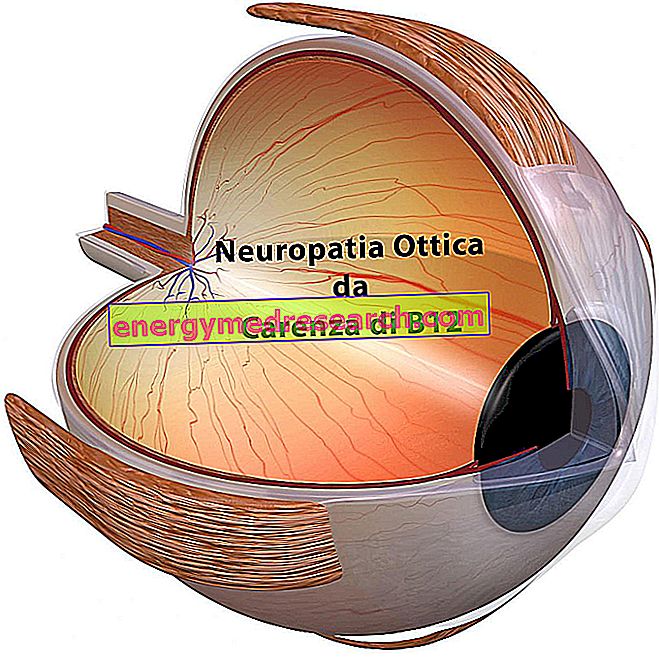Generality
The partridge eye is a thickening of the skin mostly of hard consistency, very similar to a callus, which only affects the feet.
In general, it appears following a continuous and repeated rubbing, or due to excessive pressure on the affected area.

The symptoms that characterize the partridge's eye are: pain at the affected area, difficulty walking correctly, problems wearing shoes and a sense of annoyance after so many hours spent standing.
For healthy people, the partridge's eye is generally free of complications.
The starting point for successfully treating partridge eyes is to eliminate the cause that caused their appearance.
What is the bird's eye?
The partridge eye is an area of thickened, hard or soft skin, similar to a callus and typically located in the feet .
With regard to the latter, the most frequently affected points are: between the fingers, on the upper part of the fingers and on the sole of the foot.
DERMATOLOGICAL DEFINITION
Dermatologists define the partridge eye as tiloma .
The tiloma is a circumscribed thickening of the stratum corneum of the epidermis, with a typical seat between the toes, which tends to extend in depth and, for this reason, to cause pain.
COMPARISON WITH CALLS
The partridge eye has some similarities with the calluses, but also some differences.
With the calluses it has in common the symptomatology (see the dedicated chapter) and the fact of being a hard or soft thickening of the stratum corneum of the epidermis.
To distinguish it from a callus instead are:
- The area of extension, which in the case of the partridge eye is smaller.
- The fact that the partridge's eye affects only the feet, while the calluses can concern both the feet and the hands.
Causes
Most partridge eye cases are due to continuous and repeated rubbing or excessive pressure on the affected foot area.
Rubbing or pressure with the aforementioned characteristics are often linked to the footwear worn: badly made shoes, heeled shoes and shoes that are too loose or loose are the main causes of partridge's eye.
RISK FACTORS
They are risk factors of partridge's eye:
- Wear high- heeled shoes frequently. These shoes induce mutual rubbing of the toes. The friction caused by rubbing is the cause of the skin thickening characteristic of the partridge eyes.
- Do not tie your shoes . Walking with untied shoes causes the feet to slip inside the shoes and suffer continuous rubbing in one or more points.
- Have feet with a particular shape or deformed . In these situations, any footwear worn can be problematic.
- Have feet with prominent bones . The presence of prominent bones implies that some parts of the feet repeatedly rub against the inner walls of the worn footwear.
- Suffering from a bursitis in the foot . In medicine, the term " bursitis " indicates an inflammation of an articular bursa (a liquid-filled pouch that resides near a joint and offers the latter protection and support). The presence of a bursitis can complicate the use of some shoes, which could compress a certain area of the foot.
- Suffering from a condition known as a hammer toe . The hammer toe is a joint problem that can affect not only the feet but also the hands. In both cases (whether involving the feet or involving the hands), the affected finger or fingers take on a bent appearance at the central joint.

Symptoms and Complications
To learn more: Symptoms Occhio di Pernice
The typical symptoms of a partridge eye are:
- Pain in the area of thickened and hard skin.
- The difficulty in wearing shoes in general.
- Difficulty walking properly . It is an automatic behavior on the part of the patient, to avoid getting sick when walking.
- Difficulty standing up for long periods. It is a consequence of foot pain.
TYPES OF EYE OF PINK
There are two types of bird's eye:
- The eye of a tough partridge . It is the most common type. It is the size of a pea and has, in the center, a sort of leather thorn. It usually appears on the fifth toe and causes pain and swelling.
- The eye of a soft partridge . It is usually whitish and rough to the touch. The most frequent training site is between the toes, where there is more moisture and tendency to sweat.
The eye of a soft partridge causes pain and sometimes bacterial or fungal infections.
COMPLICATIONS
For healthy people, the partridge's eye is generally free of complications .
It could instead be a source of complications for those suffering from a disease such as diabetes : a partridge eye in a diabetic, in fact, can give rise to deep ulcers and consequent infections.
The presence of an infection involves signs of inflammation at the affected area, acute pain and pus production. For more information, read: diabetic foot.
WHEN TO REFER TO THE DOCTOR?
It is good that all diabetics who develop one or more partridge eyes should go to their doctor, to prevent them from causing complications.
WHEN TO REFER TO A SPECIALIST?
It is good to contact a foot disease specialist - the so-called podiatra - when the bird 's eye is a particularly painful and / or recurrent problem, despite all the appropriate treatments and remedies.
Diagnosis
The partridge eye is visible to the naked eye, so it can be diagnosed with a simple objective examination.
A very important aspect of the diagnosis of a partridge eye is the search for the triggering causes: the knowledge of the latter allows us to treat the problem in the best way and, possibly, to prevent it from recurring in the future, once the treatment has taken place.
Treatment
The nodal point of the treatment of a partridge eye is the elimination of what causes repeated rubbing or excessive pressure to the detriment of the affected foot area.
Once the cause or causes have been eliminated, they could be useful:
- The removal by the hand of a podiatra of the cutaneous area thickened and painful.
- The use of products and remedies for reducing skin thickening or for preventing rubbing / pressure at the affected area.
- Application of gels or liquids to salicylic acid.
REMOVAL OF THE EYE OF THE PINK HAND OF THE PODIATRA
To remove a bird's eye, the podiatra uses a sort of sharp chisel. In general, the removal is not painful, as the area of removed skin is free of pain receptors (NB: the cells of the horny layers of the epidermis are dead cells).
Doctors and podiatrias strongly advise against the self-elimination of partridge eyes, as those who resort to this solution could injure themselves and - following the injury - develop an infection.
PRODUCTS AGAINST THICKENING AND ESTIMATED REMEDIES
Among the products for the reduction of skin thickening and among the remedies that prevent rubbing / pressure, are:
- Special rehydrating creams for thickened skin, such as urea creams
- Special protective patches.
- Special padding or soft insoles to be applied on the affected area.
- Silicone orthoses to be applied to the feet and capable of redistributing a monolocalised and excessive pressure in several points.
APPLICATION OF PRODUCTS TO SALICYLIC ACID
Liquids and salicylic acid gels are useful because they have a softening effect against the stratum corneum of epidermis which is a partridge eye or a callus.
Their application is painless.
Please note: liquids and salicylic acid gels are contraindicated in the presence of diabetes, peripheral arterial disease, peripheral neuropathy, particularly fragile skin, chapped skin or skin with wounds.
Using them in the above situations could cause damage to the skin (obviously in the application site) and to the underlying nervous and tendon structures.
TREATMENT IN CASE OF INFECTIONS
An infected partridge requires antibiotic treatment and elimination of the area of skin bearing the signs of infection.
Prognosis
Generally, with adequate treatment, the partridge eye has a positive prognosis.
Prevention
Dry the feet thoroughly after washing them, use the pumice stone to remove hard and thickened areas of skin and wear comfortable and appropriate shoes are the main preventive measures against the eye of the partridge.




